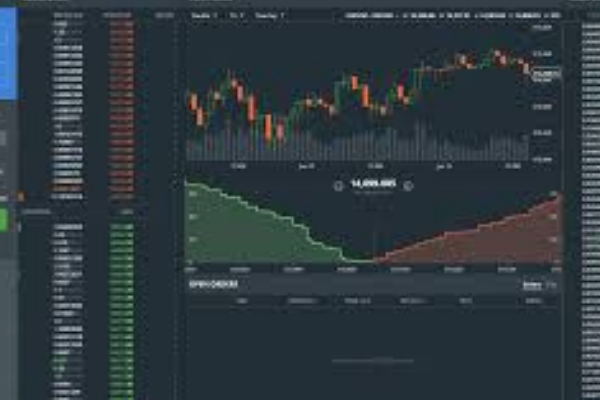Crypto investors are always on the lookout for executing trades at the best possible price. And while crypto assets are typically volatile, assessing liquidity is where the real challenge lies. One of the most useful resources for crypto traders to tackle this issue is the use of aggregated order books/order book aggregators. However, to actually understand their imperative relevance, it’s important to understand the dynamic workings of the crypto market world first.

image source: Google
The workings of the crypto market
There are several crypto trading exchanges in the cryptocurrency space today. As opposed to stock trading, which operates on a fixed Monday through Friday schedule with stipulated open and close timings, the crypto market space is one that is open 24/7. Add to this mix, the diverse nature of multiple exchanges, and what we have is the compounded issue of inefficient data capture and a fragmented crypto ecosystem – leaving space for the crypto trader community to almost burn out.
So, how exactly can the process of executing crypto trades be made easier?
With several crypto tokens available across multiple exchanges, a crypto trader usually has to deal with different interfaces that demand a steep learning curve. Understanding different workflows and processes across each exchange make the user experience daunting and intimidating, particularly for new traders on the block.
What’s worse is the lack of liquidity which accounts for much of the frustration for traders who already have to deal with high spreads, high slippage, inadequate trading pairs, and the prerequisite of having to create separate accounts for each exchange that they’d like to trade on. This is precisely where a multi-exchange crypto platform can work to their advantage. A multi-exchange crypto trading platform has the powerful feature of an aggregated order book that helps traders optimize their trading functions.
How does an aggregated order book help?
A cryptocurrency order book aggregates real-time crypto data to create an electronic list of buy and sell orders for cryptocurrencies, typically organized based on price. They are useful in improving market transparency and thereby help traders access liquidity, considering that they store and provide information on price, availability, and depths of trade.
One of the ways traders can get a grasp on liquidity is through volume metrics, primarily for the major cryptocurrencies. Apart from volume metrics, another metric that offers deep insights into the liquidity of a cryptocurrency is order book aggregators.
What are the components of an aggregated order book?
There are three parts to an aggregated order book: buy orders, sell orders, and order history.
1. Buyer’s side and seller’s side
An aggregated order book typically contains a log of market prices and therefore includes a buyer’s side and a seller’s side – the two major participants in a market.
2. Bid and ask
The terms buyer’s side and seller’s side are often replaced by ‘bid ‘and ‘ask’ in some order books. Typically, buyers assume the role of people who ‘bid’ for a certain number of crypto tokens at a specified price, and sellers “ask” for a specific price for their tokens.
3. Prices
The prices that the buyer bids for and the seller asks for are both recorded in an order book – taking into consideration the interests of both parties. The prices are systematically arranged in two columns.
4. Visual representation
Normally, an aggregated order book comes with a table of numbers consisting of prices and total amounts from both buyers’ and sellers’ sides. Aggregated order books also have visual representations to better showcase the relationship between buyers and sellers.
The final take?
Crypto traders are able to acquire a quick understanding of the market demand and supply through aggregated order books.
Looking at an aggregated order book proves to be one of the most useful ways to get a quick sense of liquidity differences across exchanges and order sizes. Typically, a crypto exchange’s aggregated order book has a cumulative display of orders, with multiple exchange books layered on top of each other. An order book helps further the goals of profit optimization by forecasting price fluctuation and consequently presenting trading advice for both expert and novice crypto traders alike.


